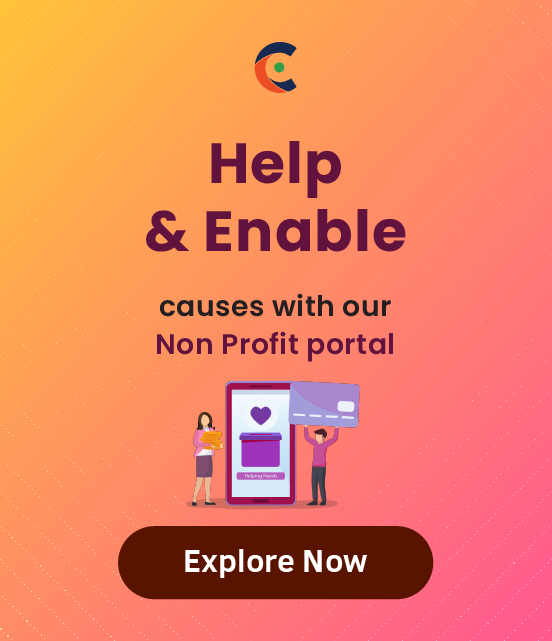Automating the in-house operations can help nonprofits manage activities like proposal approval while increasing donations. Though the purpose of nonprofits and corporates vary, the operation method remains the same. Just like businesses, NGOs have to raise awareness and funds for their organization. However, many organizations are stuck managing their internal operations and don’t have enough time to create awareness. They need a little help to track, share updates, store records, collect feedback, and save time.
To overcome challenges, nonprofits should undergo nonprofit portal development that can help them be transparent and increase awareness.
This post will cover the advantages and features of nonprofit portal development to overcome the challenges NGOs face.
Why You Need to Go for NonProfit Development
Now that the pandemic has impacted the fundraising efforts, NGOs have to face various challenges such as lack of funds, no strategic planning, improper maintenance, absence of networking, etc., to meet the ends. On top of this, administrative challenges take a toll on them.
That’s when a nonprofit portal comes into the picture. It overcomes nonprofit challenges such as:
Manual Management
Efficiency is the key to nonprofit meetings. For instance, registering a new volunteer, assigning them tasks, reminding everyone about the meeting, managing spreadsheets to store data, etc. However, most nonprofit organizations are stuck managing activities manually. Say a donor has gifted an item. The team has to jump between systems or sheets to know who donated it, when they donated it, how many times the donor has donated over a span of time, and so on.
Isn’t this too much to handle?
It is!
Hence, nonprofit portals provide a unified approach to handle all the activities from managing fundraising to grant and workforce management. With nonprofit portal development, you can provide a separate space to everyone, including volunteers, board members, and partners, to manage their activities. It means volunteers don’t have to ask or update each and every activity to the seniors. They can view and manage their tasks from the portal. Donors can view and download the donation receipt by logging into their space. Teams can share documents internally, with no need for emails. You don’t have to run to and fro between CRM and other systems for updating data.
Every extra hour that you and your team spend on trivial activities can be spent productively with NGO portal development.
Tracking Funds, Transactions, and Expenses
How do you record donations, transactions, and other organization expenses?
Most nonprofits either use spreadsheets to record these activities or set up a bookkeeping and accounting solution. They then record all the in-kind donations in it like a bank cashier does after receiving the payment. However, it’s time-consuming. Besides, you need to hire a bookkeeper who will record everything. If it’s a third-party tool, you lose the data once you unsubscribe from the service, making it difficult to track details. You may also have to switch between systems to track down a detail. Say you’re looking for the total expenses of a particular campaign along with the person’s details who spent it and where. Your bookkeeping account won’t be able to track all these details.
So, an NGO portal offers clients to view invoices right on mobile devices and pay using digital payment methods right after the appointments. This helps clients avoid weeks of waiting for invoices. They don’t need to contact the team to ask about the status and can view it directly from their portal, like online banking.
Just like members can view and track their invoices and donation activities, you can keep a check on all the transactions and expenses. The auto-sync between CRM and portal helps you track every detail in real-time. You don’t need to switch to CRM to view a donor’s details. Right alongside donation details and status, you can view all about donors too.
Sharing News and Updates
With awareness, you also need to build credibility and authenticity. It’s possible only when you share your work with the world. Unless people know about your work, what activities you take part in, the upcoming events, effects of the campaign, ongoing campaigns, etc., they won’t partake in any activity. Also, it’s challenging to keep them updated with all the ongoing activities and news. You can post on social media, but do you think everyone will check it at the right time?
Besides, people want to know more about you, your industry, work, laws and regulations, and everything involved. They want to widen their exposure and knowledge.
NGO portal provides you with a knowledge base that your volunteers, donors, members, directors can easily access. They can personalize the type of content they would like to know by predefining parameters. Say a particular member is interested in knowing about the environment – new laws, ongoing campaigns, upcoming events, etc. They can filter out the information to receive updates about that section only.
Along with news, updates, and articles, you can even provide guides and training materials to help volunteers and staff.
Collaboration
Most of the nonprofit board members come from existing corporations and businesses, sharing their expertise. Hence, they need to attend to various matters dividing their time and attention. This makes it difficult for everyone to be on the same page. Sometimes, in between meetings, they may forget about another task or points they wanted to discuss. If a teammate is on-field and requires specific documents, they may contact the team and wait until the document arrives.
Through an NGO portal, you can manage your team’s internal work, add collaboration tools for remote meetings and document sharing, and connect team members better. The on-field teammate won’t have to wait for the team to share the document. They can access the knowledge base to view the document. If there’s an upcoming meeting, the portal will automatically remind the concerned people about it, no need to call every team member or drop a message.
By undergoing nonprofit portal development, you can balance your nonprofit organization’s internal and external operations. It can help you boost productivity and achieve desired goals.
Here are the features of nonprofit portals that help you deliver excellent service.
Features of NGO Profit Development
Consider a nonprofit as a museum. What do you need to run a museum? A collection of artifacts, a database of collection of artifacts, donors, and their memberships. Next, you may need to track the funds and if donors have paid and are current members. Depending on the size, you may require a volunteer database along with a directory of important contacts. Additionally, you need a way to track your advertisements and process payroll.
That’s a lot of work!
All of these tasks need to be taken care of for a museum to run efficiently. In your case, implementing NGO portal development is the best way to help your organizational peers to perform better.
Here’s how:
Donation Tracking
A nonprofit portal enables you to track donations along with donor and campaign details. You can access everything, including donation history, recurring donations, upcoming and ongoing campaign and events lists, and funds invested in one window.
Donor and Member Management
NGO portal provides detailed information of donors’ past donations to identify the campaign they might be interested in. The donor details help NGOs understand the source of contributions.
For member management, it provides details such as past subscriptions, invoices, and more.
Volunteer Management
With nonprofit portal development, you can manage and support your volunteers with proper onboarding, profile management, timesheets, and task scheduling. They can view the allocated tasks and create a schedule. You can know their availability to ensure that their time and efforts are correctly utilized.
Fundraising Campaign and Event Management
You can set up registrations, assign tasks, and manage activities and coverages. With a fundraising management feature, you can provide donation forms, set real-time goals, and share the fundraising campaign on social media. Event management helps you plan events by managing bookings and sponsors to tracking attendees, sending out invites and reminders.
Automated Fund Transfer
Nonprofit portal development enables automated scheduling of fund transfers by allowing users to choose the preferred payment gateway from the available options.
Additional Features
The NGO portal offers secure access, unique profile management, smart dashboard, live chat, receipt management, and calendar feature to streamline nonprofits’ operations.
The secure login provides each volunteer, donor, and team member with separate access based on their roles. With unique profiles, everyone can see their activities, perform actions, and update details. The dashboard gives a quick view of the essential things. Live chat keeps the communication intact. And the calendar helps everyone to stay updated with their tasks, meetings, events, and other activities.
You can even add custom features to your nonprofit portal.
Go for Nonprofit Development with CRMJetty
By now, you might have understood that you need an efficient platform to connect to your audience and improve workflow.
NGO portal development has numerous benefits, such as:
- building relations
- developing trust and transparency
- enabling fundraising features
- promoting advocacy
The question is how to implement the portal.
CRMJetty can help you with a ready-to-integrate as well as a custom nonprofit portal exclusively for your organization.
You can get all the essential as well as the custom features based on your requirements.
All product and company names are trademarks™, registered® or copyright© trademarks of their respective holders. Use of them does not imply any affiliation with or endorsement by them.







